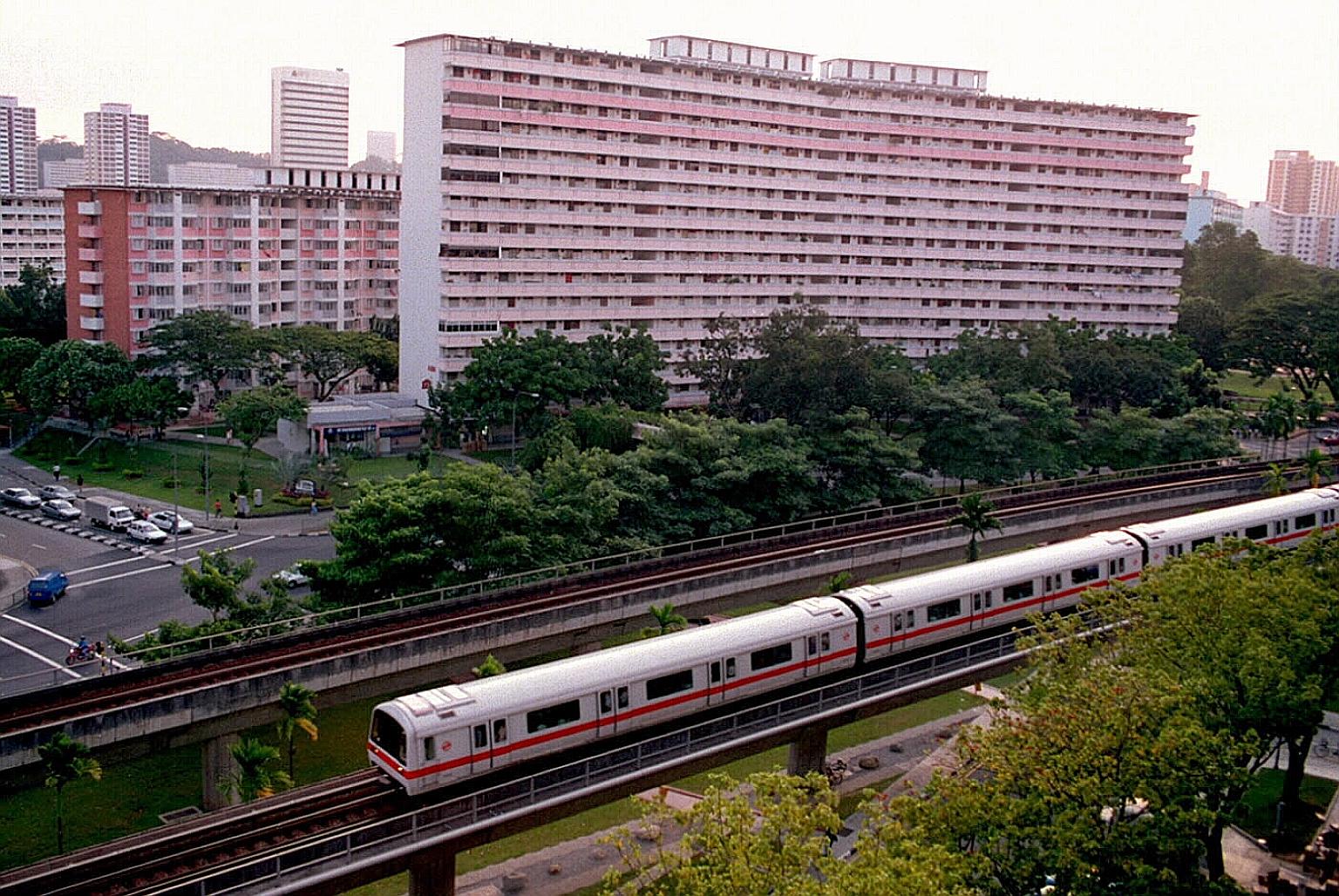MRT train refurbishment plan on hold
LTA looking at best treatment for older trains, including replacing them, under new rail financing framework
Sign up now: Get ST's newsletters delivered to your inbox

An MRT train plying the East-West line in Redhill in February 1996. LTA said it is "reviewing what is the best treatment for older trains - whether to refurbish them or replace them with new trains, to strike a good balance between cost effectiveness, rail reliability and train availability".
ST FILE PHOTO
Follow topic:
The authorities are looking at whether to replace old MRT trains, instead of refurbishing them, as originally planned.
This comes as the government gets ready to assume ownership of all trains from SMRT and examines what to do with the ageing ones.
In 2014, Singapore Rail Engineering, SMRT's engineering services division, had inked a deal with Japan's Toshiba to replace motors on 66 of its oldest trains. It recently finished doing so for one train.
But now, with SMRT and the Land Transport Authority (LTA) agreeing to shift to a new rail financing framework - in which the Government assumes ownership of all operating assets, including trains - the refurbishment works have been put on hold.
An LTA spokesman said that under the new framework, the authority would also be responsible for the expansion, replacement and refurbishment of rail operating assets.
"As such, LTA is reviewing what is the best treatment for older trains - whether to refurbish them or replace them with new trains, to strike a good balance between cost effectiveness, rail reliability and train availability," she said.
At SMRT's first-quarter financial results briefing on Monday, its chief financial officer Manfred Seah said Singapore Rail Engineering had incurred an operating loss of $2.7 million.
This was "due mainly to Singapore Rail Engineering's provision for costs associated with the suspension of works relating to the end-of- life refurbishment of trains pending a decision by the authorities".
The Straits Times understands that SMRT's losses arose because it had already ordered parts for the refurbishment.
Observers said the refurbishment process would allow SMRT to gain more in-depth engineering knowledge. A source said the first train took almost a year to refurbish, but subsequent trains would be completed more speedily because the engineering staff would "already know what to do" after the first project.
Since the two massive breakdowns in December 2011, SMRT has put in motion plans to fix and upgrade its trains and systems.
A large part of the plans involves replacing key parts such as propulsion systems and air compressors on 19 second-generation trains by this year, and 66 first-generation trains by 2019.
SMRT had high hopes for the new Toshiba train motors. It said the permanent magnet synchronous motors were up to 30 per cent more energy-efficient and 12 per cent quieter. They were also less costly to maintain as they have fewer parts.
They cost more to buy, but SMRT said that, from a life cycle perspective, they are worth it.

